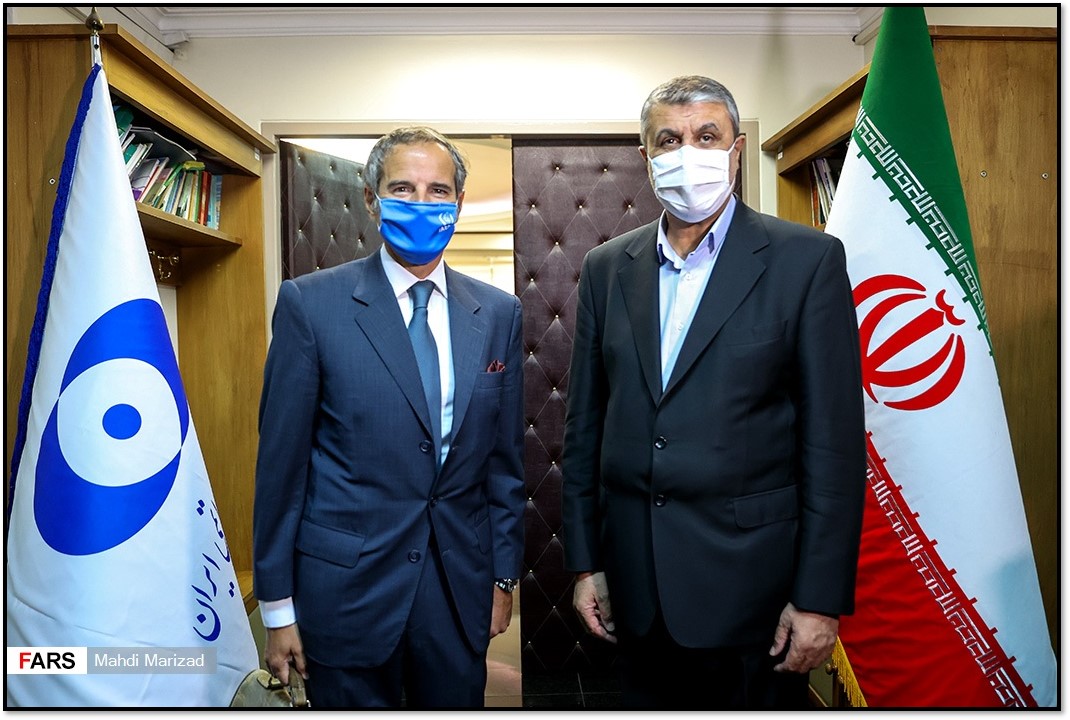On December 15, Iran and International Atomic Energy Agency (IAEA) reached an agreement to allow the U.N. nuclear watchdog to replace surveillance cameras at the Karaj facility that produces parts for centrifuges. Centrifuges are machines that spin uranium gas at high speeds to produce fuel for nuclear reactors or weapons. Yet the deal is only a partial solution to a potential crisis. The compromise will still prevent the IAEA from actually seeing what is on the cameras—or knowing the status of Iran’s technological advances since February 2021. Experts have been increasingly concerned about a possible “sneakout” in Iran’s nuclear program because inspectors have had limited access.

“The agreement with Iran on replacing surveillance cameras at the Karaj facility is an important development for the IAEA's verification and monitoring activities in Iran,” the IAEA said in the announcement. But Iran has balked in cooperation on other questions about its nuclear program, including activities and uranium traces at four suspect sites.
Karaj has been a key flashpoint in the growing dispute between Iran and the U.N. nuclear watchdog agency. After access was cut off in February 2021, the Karaj site was sabotaged in June. Tehran blamed Israel. Iran claimed that some of the IAEA cameras were damaged and removed them. Iran repeatedly prevented inspectors from repairing or replacing the cameras. The following is the IAEA statement on the new agreement.
IAEA and Iran Reach Agreement on Replacing Surveillance Cameras at Karaj Facility
The International Atomic Energy Agency (IAEA) will soon install new surveillance cameras at Iran’s Karaj centrifuge component manufacturing workshop under an agreement reached today by Director General Rafael Mariano Grossi and the Head of the Atomic Energy Organization of Iran, Mohammad Eslami.
The cameras, to be installed in coming days, will replace those that were removed from the Karaj facility earlier this year. In addition, the Agency and Iran will continue to work on remaining outstanding safeguards issues with the aim of resolving them.
“The agreement with Iran on replacing surveillance cameras at the Karaj facility is an important development for the IAEA’s verification and monitoring activities in Iran. It will enable us to resume necessary continuity of knowledge at this facility,” Director General Grossi said. “I sincerely hope that we can continue our constructive discussions to also address and resolve all outstanding safeguards issues in Iran.”
The agreement between the two sides includes the following elements:
- The Agency and Iran will continue to work on remaining outstanding safeguards issues with the aim of resolving them. To this end, Iran and the Agency will conduct a series of exchanges of information and assessments including through meetings of experts.
- The Agency will make available a sample camera and related technical information to Iran for analysis by its relevant security and judiciary officials, in the presence of the Agency inspectors, on 19 December 2021.
- The Agency will reinstall cameras to replace those removed from the workshop at Karaj and perform other related technical activities before the end of December 2021 on a date agreed between the Agency and Iran.
